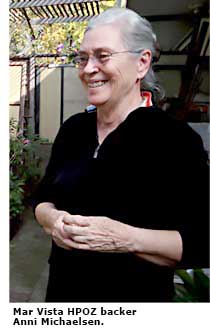Modern Preservation: Streetscape Smarts - Page 3
River City Commons is a good example of a neighborhood that took a look at its process for regulating architectural changes and decided more needed to be done. Along the way, their neighborhood association's architectural review committee, led by Denise Jerome, drafted nearly 50 pages of 'Architectural Guidelines' in support of the neighborhood's Streng architectural style.
The booklet, inspired by the 'Eichler Design Handbook' produced in 2001 by the City of Cupertino for the Fairgrove Eichler tract, illustrates in detail—and in color—compatible and incompatible architectural components such as lights, house numbers, fencing, and windows.
The association is presently distributing the guidelines for owner review and comment. A companion document that describes the original Streng architecture for owners who want to restore their homes is now available on the association's new website (rivercitycommons.com). The complete 'Architectural Guidelines' will also soon be posted.
In addition, Jerome has been rewarding owners who make compatible or restorative changes and who work with the committee. Rather than write threatening or negative newsletter articles, the committee publishes a monthly article thanking those who do the right thing—even awarding them with gift certificates to Starbucks.
"Some of these people grumbled because they had previously received violation notices about poor landscaping or other issues," Jerome says. "It's so nice to see a big smile when we tell an owner they've won the monthly architectural kudos. Already we're getting more and more cooperation."

Overlay zones
CC&Rs , by the way, are not the only rules that may have been forgotten. Neighborhood saviors should also visit their city or county's zoning department to find out what rules are already on the books but are not being enforced.
City and county planning boards can also protect neighborhood character by imposing new regulations, generally by revising the zoning ordinance. Almost every jurisdiction handles this a little differently. Los Angeles offers a 'historic preservation overlay zone.' Sunnyvale has a 'single-story overlay zone.' Other cities offer 'neighborhood conservation districts.' In Marin County, the Terra Linda Eichlers and neighboring Alliance-built homes were declared an 'Eichler and Alliance Homes Overlay District.'
The focus can be as simple as preventing two-story homes in a neighborhood of one-stories, or as complex as specifying window treatments, paint colors, and house-number lettering in a neighborhood in which those are distinguishing elements. Overlay zoning can focus on a neighborhood's architectural character, or its historical character.
Moratoriums
Neighbors often seek special zoning to protect their neighborhoods after a crisis has hit—a McMansion hovering in the wings, for example. In that case, it makes sense to call a temporary halt to inappropriate development through a moratorium while more permanent protections can be put in place. Adriene Biondo went that route in her Eichler neighborhood of Balboa Highlands, working with the Los Angeles City Council to issue an 'interim control ordinance' to monitor building and demo permits while Balboa Highlands sought recognition as a historic preservation overlay zone.
Presenting a united front
To convince city or county officials to step in, however, requires that a community present a unified front. This isn't always easy, or even possible. Consider the case of San Mateo Highlands, one of Eichler's most historic and unusual neighborhoods. Perched in the hills of San Mateo County, the Highlands contains several significant Eichler homes, including the famous all-steel X-100, the Pietro Belluschi-designed 'Life house,' and a row of rare two-story models.
But the neighborhood has never had architectural controls, and county zoning regulations are weak, says resident Barry Brisco. "The zoning regulations are extremely lax," he says, "and as a result almost ten percent of homes have been radically altered."
When Brisco and a group of neighbors organized in 2005, they asked the county to curb second-story additions in order to protect homeowners' light, views, and privacy. Despite the group's neighborhood referendum that resulted in 78 percent of the 300-plus Eichler owners who voted wanting new zoning to limit building height, the Highlands Community Association board shelved the results.
"The county's excuse to us was, there was not a clear consensus as to exactly what the changes to the zoning regulations should be," Brisco says. Three years later, height zoning in the Highlands remains unchanged, as new large-scale vertical additions continue to impact the character of the neighborhood.





